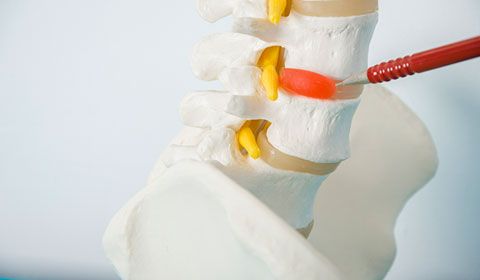What is sciatica?
The sciatic nerve is a major nerve that begins deep in the lower back, runs through the hip and deep into each buttock before traveling down each leg.
Sciatica occurs when there is significant pressure on one or more of the lumbar nerve roots, causing pain. Sciatica is not a diagnosis as much as it is a description of symptoms.
Pressure on the sciatic nerve can be caused by a variety of conditions including; herniated disc spinal stenosis, degenerative disc disease, spondylolisthesis, or other abnormalities of vertebrae.
Medical professionals may also refer to sciatica as radiculopathy - a medical term used to describe pain, numbness, tingling, and weakness in the arms or legs caused by a nerve root problem.




